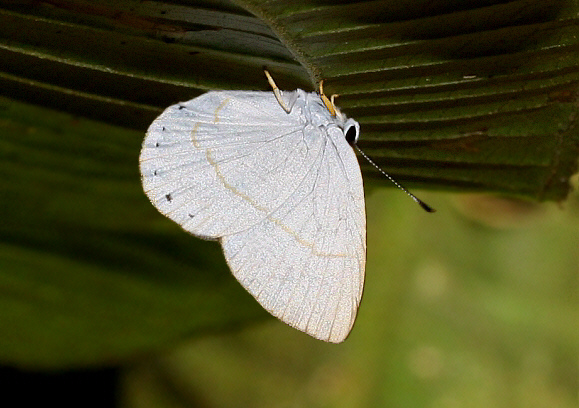 Euselasia eusepus, Tingo Maria, Peru – Dave Griffiths
Euselasia eusepus, Tingo Maria, Peru – Dave Griffiths
Introduction
The sub-family Euselasiinae is confined entirely to the neotropics. There are 172 known species of which 167 are placed in the genus Euselasia. A few are widespread across Amazonia but most are localised and uncommon. The adults are characterised by having large eyes and small palpi. Most species have rounded wings.
The upperside of eusepus is dark brown in both sexes. The males of many other Euselasia species however have patches of metallic copper or blue. Females of most species are dull brown above, often with patches of whitish or pale brown.
In most Euselasia species the undersides of both sexes are pale, with one or more vertical bands or lines. In several species there is also a dark ocellus near the border of the hindwing.Euselasia eusepus is distributed from Panama to Brazil and Peru.
Habitats
This species inhabits mid-elevation rainforest at altitudes between about 200-1000m.
Lifecycle
I have no information specific to eusepus but it is likely that the lifecycle is similar to that of other Euselasia species : The eggs are frustum-shaped. They are laid singly under leaves of Clusiaceae, Melastomataceae, Sapotaceae or Myrtaceae. The caterpillars are compact in form and covered in tufts of short setae. In several species they are gregarious and move in a processionary manner. Unlike members of the Riodininae the larvae of Euselasiinae are not associated with ants.
Adult behaviour
Euselasia males are noted for their habit of spending most of their lives hiding under leaves. Some species such as eusepus and angulata tend to sit under the leaves of low vegetation, while others such as euriteus and clithra tend to settle higher up, under the leaves of trees at heights of between 2-5 metres. Often males of several Euselasia species will occupy a particular tree but each species will settle at a different height and fly at a different time of the morning.
Although they may appear to be hiding, they are in fact “perching” i.e. waiting to ambush any other Euselasia that flies past. If the ambushed butterfly turns out to be another male a short aerial battle takes place after which the intruding male is usually ousted, and the conquering male returns to sit beneath the leaf where he originally perched. Perching males hold their wings erect, but often with the hindwings very slightly apart, enabling a glimpse of the metallic upperside.
The flight is rapid and erratic. Males are active early in the day, but females fly and oviposit in the afternoon. Both sexes visit flowers and extrafloral nectaries. The butterflies fly throughout the year but are commonest in the late dry season and during drier periods in the rainy season.
